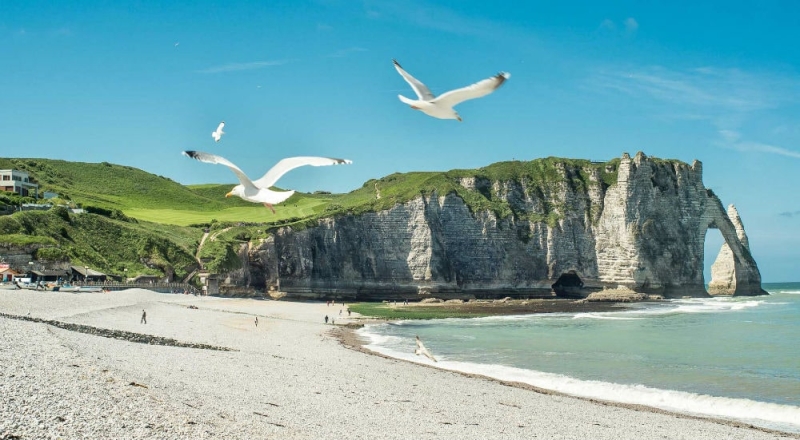
France is surrounded by mountains, seas and oceans; in some regions there is eternal summer, while in others there is a breeze and rain even in summer. The natural attractions of this country are famous and popular. Mountain peaks and volcanoes, waterfalls and grottoes, rocky coastlines, beaches and nature reserves attract no less tourists than historical and cultural monuments. It’s impossible to see all the natural wonders of France, but these 10 are worth visiting for everyone.
1. Ocher quarry in Roussillon (Ocres de Roussillon) in Provence
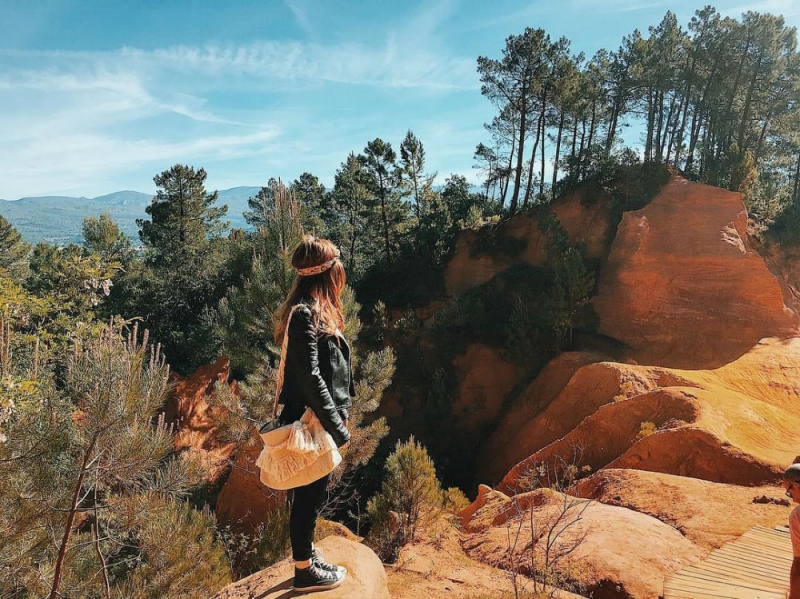
Photo: @forloveandwildbliss/Instagram.com
In the south of France, in Provence, there is the Luberon Valley, in the center of which lies the town of Roussillon with houses in red, yellow, pink and orange. It is surrounded on all sides by red cliffs, which arose in the 18th century, when there was the largest ocher mining canyon in Europe. In the 20th century, the quarry became an ocher reserve (Sentier des Ocres),
a 40-minute walking route is laid out through the seemingly Martian landscapes. We recommend coming to the canyon in the morning or at sunset, when the ocher shines in hundreds of shades. You can get to the quarry by bus from Avignon or Aix-en-Provence, or by car along the A7, D900 or N100 roads.
2. Bay of Mont Saint-Michel (Baie du Mont-Saint-Michel) in Normandy
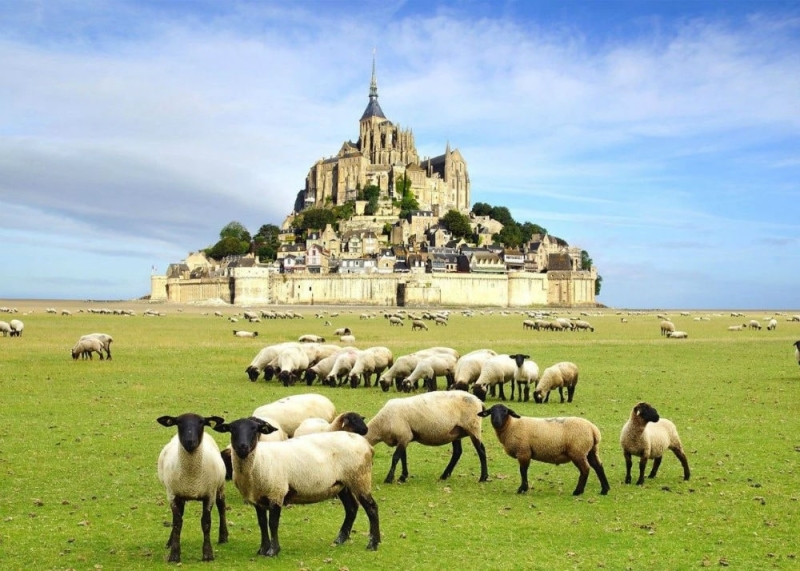
Photo: Igor Plotnikov/Shutterstock.com
The bay of Mont Saint-Michel is considered the most beautiful in France, and the island lying in the middle of the bay with the medieval abbey of the same name is included in the UNESCO World Heritage List. Twice a day, the strongest tides in Europe occur in the flat bay of the bay. During low tide, tourists get to the island, explore the abbey, and watch from its walls as water floods 15 kilometers of the bay at great speed. You can get to Mont Saint-Michel by car via the A11, A13 and A84, or by train or bus, which runs regularly from Paris and Rennes.
3. Chalk cliffs of Etretat (Falaises d’Étretat) in Normandy
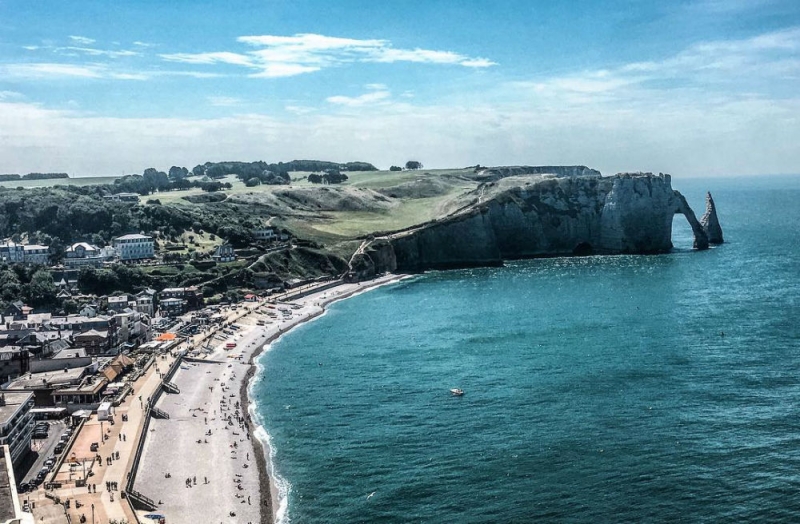
Photo: @oph_co/Instagram.com
The 200 kilometers of Atlantic coastline in the Normandy region of northern France is called the Alabaster Coast (Côté d’Albâtre) because of the white color of the coastal rocks. The most beautiful rocky arches with cozy bays and huge cliffs are located in the vicinity of the town of Etretat. In the 19th century, Etretat was a very popular place among impressionist artists; its rocks can be found in dozens of paintings by Claude Monet. Now along the most popular rocks and cliffs there are walking paths with signs. The most convenient way to get to Etretat is by bus from Le Havre or Paris. By car you can get there from Le Havre via the D940 road, from Rouen via the A151 and A29, and from Paris via the A14 and A29.
4. Dune du Pilat in Aquitaine

Photo: @thiagobregondi/@lucky.star.ma/Instagram.com
Pila Dune, located in the Bay of Arcachon in southwestern France, in Aquitaine, is considered the largest sand dune in Europe. Its height is 108 meters, its width is about 500 meters, and its length is more than 3 kilometers. On one side the dune is surrounded by a pine forest, and on the other it is washed by the waters of the Atlantic Ocean. At the foot of Pyla, in the waters of the Bay of Arcachon, there are dozens of oyster farms, so in restaurants near the dunes you can try excellent oysters and seafood at low prices. You can climb to the crest of the dune using wooden stairs. The nearest big city is Bordeaux, from where buses and trains go to the dune. The best time to visit the dune is before 11 am, before the tourist buses arrive.
5. Verdon Gorge (Gorge du Verdon) in Provence
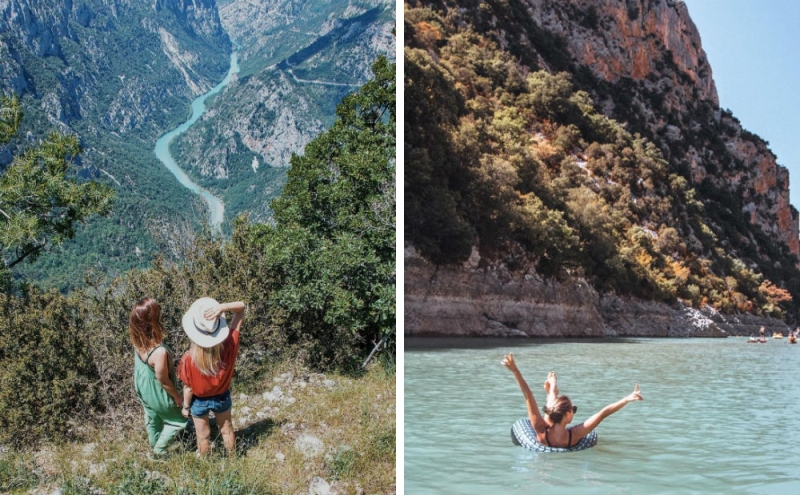
Photo: @my_tasty_travels/Instagram.com
The Verdon Gorge is the deepest in Europe. It is located in the Alpine foothills of the Provence region, approximately 50 kilometers from the Mediterranean coast. The Grand Canyon du Verdon is the most beautiful part of the gorge, it lies between the villages of Castellane and Moustiers-Sainte-Marie. Its depth is almost 700 meters, its length is 19 kilometers, and the distance between the banks is 1500 meters. The turquoise color of the water of the Verdon River seems especially bright against the background of the light stone of the rocks. The roads D71, D90 and D23 pass through the Grand Canyon, and there are also more than ten walking routes of varying complexity and length. There is a bus from Nice, the nearest big city, to the Verdon Gorge.
6. Regional Park Camargue (Parc de Camargue) in Provence
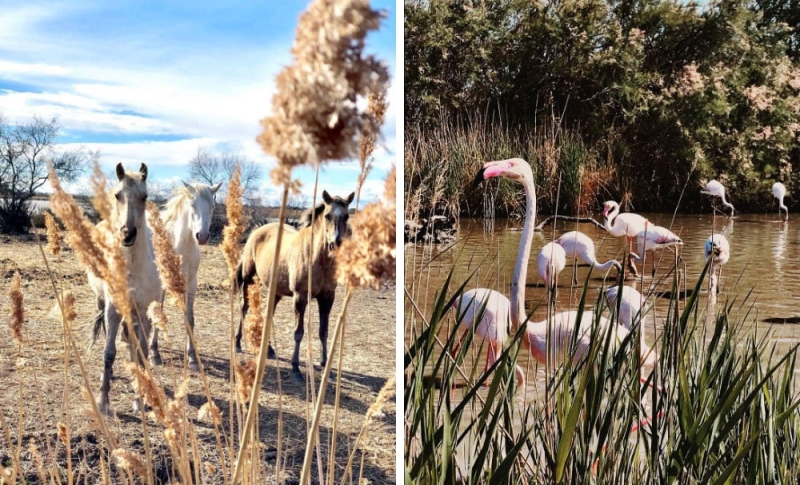
Photo: @lauralxdr/@not_only_tourists/Instagram.com
The Camargue is a natural park in the south of France, on the Mediterranean coast, near the city of Arles. The Camargue has a unique landscape: salt marshes, sea lagoons, reed swamps and sandy islands, home to pink flamingos, black bulls and wild white horses, which are not found anywhere else in Europe. Horses and bulls can be found throughout the park, but pink flamingos live only in the territory of the ornithological park of Pont de Gau. In addition to flamingos, another 260 species of birds live there. The most convenient way to get to the Camargue and move around it is by car, but there are also several walking routes through the park. In summer, there are boats and mini-trains from Saintes-Maries de la Mer and buses from Arles and Montpellier to the Camargue.
7. Volcano Park in Auvergne (Parc des Volcans d’Auvergne)
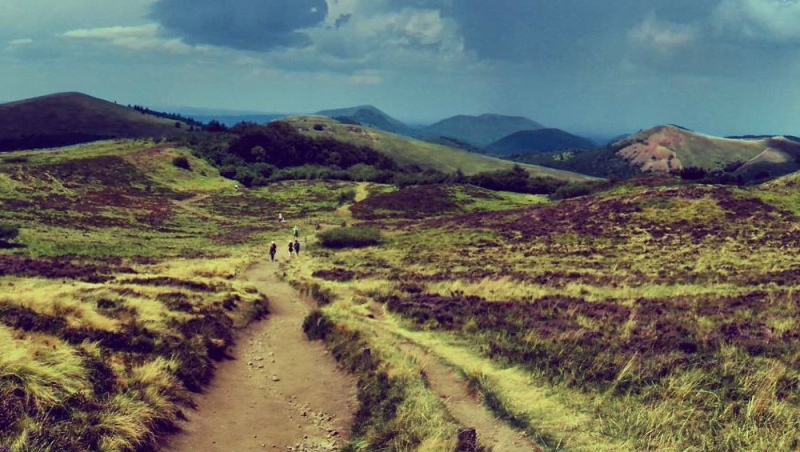
Photo: @jesse.pommeroy/Instagram.com
Volcano Park in the Auvergne region, in the center of southern France, is the largest nature reserve in the country. The park contains 80 extinct volcanoes of various shapes, the highest of which form the Chaîne des Puys mountain range: Puy-de-Dôme (1465 m),
Puy de Sancy (1886 m) and Puy Mary (1783 m). The foothills of these popular tourist volcanoes can be reached by car along the A72, A71 and A89 highways or by shuttle from Clermont-Ferrand train station. You can climb up to the empty craters of the volcanoes on foot or on horseback. There are cycling and walking routes between the main volcanoes and throughout the reserve.
8. Calanques de Piana in Corsica
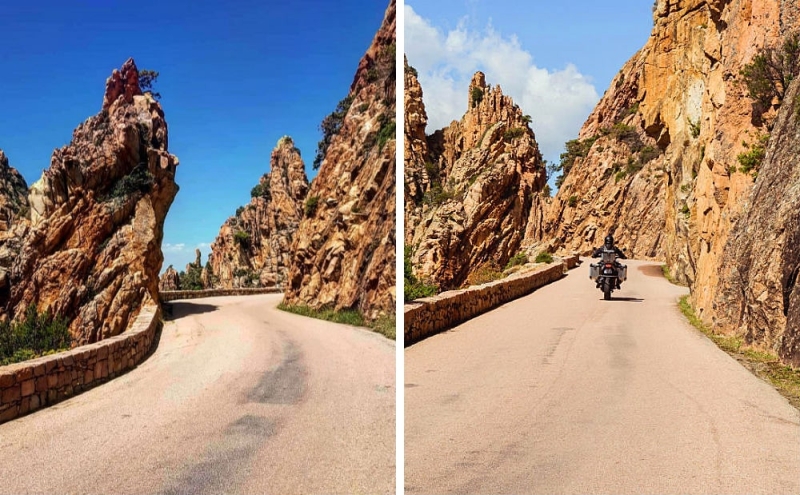
Photo: @arno_boou/@the_bliss_life_/Instagram.com
The Calanques of Piana are located in the national park reserve of Scandola (Sacndola) in the Bay of Porto on the island of Corsica, they are included in the UNESCO World Heritage List. Calanques are rock formations made of pink granite, which, due to erosion, have taken on bizarre shapes. They form quiet bays and caves in the rocks and rise in sharp peaks to a height of more than 300 meters. Pine and chestnut forests grow on their slopes, and their foothills are washed by the Mediterranean Sea. There are two ways to see these rocks – take a boat trip from Porto,
which will take you through the most beautiful places, or follow one of the walking routes that run from Porto through Cargèse.
9. Mer de Glace glacier in Chamonix, in the Alps
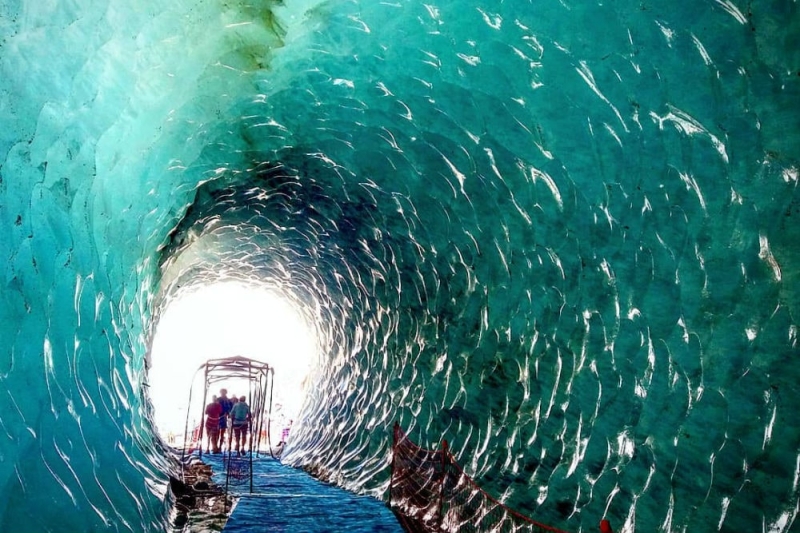
Photo: @claudiu_sfetcu/Instagram.com
This glacier originates from the Mont Blanc mountain in the Western Alps, on the border of France and Italy, and smoothly descends into the Chamonix valley. The glacier is constantly moving, moving 90-120 meters per year. Its length is 13 kilometers, area is 40 square kilometers and it is the largest glacier in France. Already in the 19th century, tourists came to see it, and today everyone can examine the glacier not only from the height of the railway that runs above it, but also from the inside. Inside the glacier, 200 meters thick, a long tunnel has been cut, consisting of dozens of passages and caves with multi-colored lighting. Also next to the glacier there is a mineral museum, observation decks and walking paths going down into the valley. Montenvers station at the foot of the mountain can be reached by train, bus or car, but up to the mouth of the glacier only an old red train from 1908 goes.
10. Grotte de l’Aven Armand in Occitanie
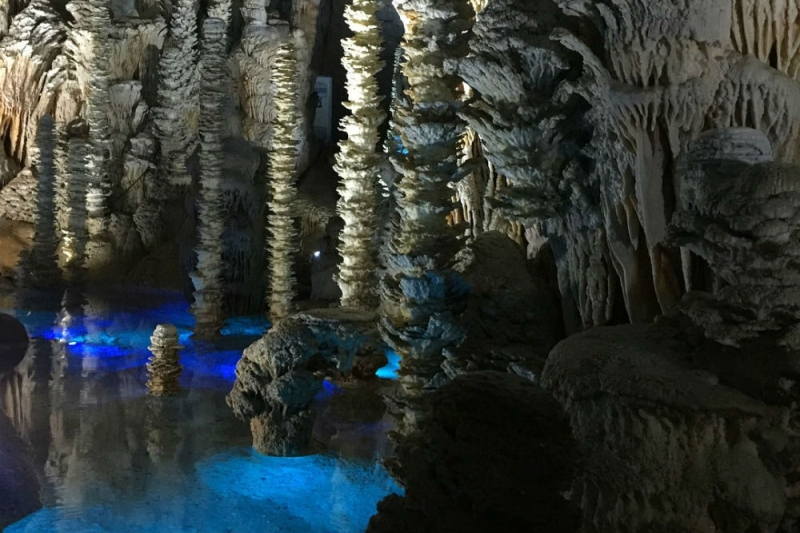
Photo: @aboscov/Instagram.com
The Aven Arman Grotto is located on the limestone plateau of Causse Méjan in the Occitanie region of southwestern France. The grotto is known for its largest stalagmites in the world – some of them reach 15-20 meters in height, and the tallest is 30 meters. In total, there are more than 400 stalagmites in Aven Arman. They are easy to see – a special funicular takes visitors 50 meters deep through a tunnel into a brightly lit cave, whose dimensions are stunning – 110 meters long, 60 meters wide and 45 meters high. Free tours of the grotto are held every hour, and the main stalagmites are illuminated in different colors. You can get to the grotto by bus from the city of Rodez, but the most convenient way is by car along the road RN 586.
Searching for a hotel, booking rooms and paying will not take much time if you do it on the website or in the OneTwoTrip application.

